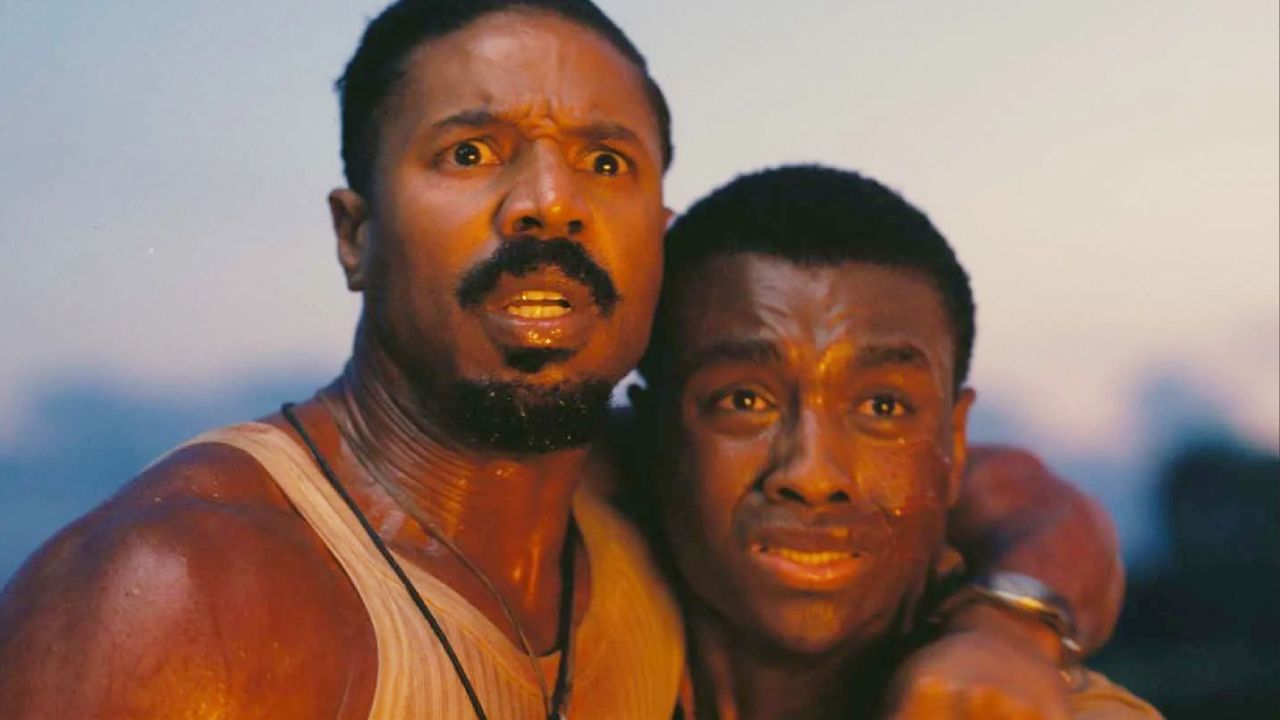We talked about the historical elements of the film and also the story that inspired not only Robert Eggers, but also William Shakespeare.
In ‘El hombre del norte’ we find elements of Norse mythology and other usual figures in the best Viking movies, but, Is your story based on a true story or is it all pure legend? The new film by Robert Eggers, co-written with the Icelandic Sjón Sigurdsson, offers us an epic adventure that is visually spectacular and full of violence that should not have been strange to the warriors of the Viking Age.
Set in 10th-century Iceland, ‘The Northman’ follows the odyssey of the Viking prince Amleth (Alexander Skarsgård), who seeks revenge against his uncle Fjölnir (Claes Bang) for the murder of his father, King Aurvandil (Ethan Hawke). Having witnessed his murder as a young boy, he was forced to flee and over the years become a brutal warrior in a group dedicated to razing towns. He soon sees an opportunity to return home, save his mother (Nicole Kidman), and reclaim what is his with the help of a slave, Olga (Anya Taylor-Joy), who has more tricks up her sleeve than he does. it seems.
The critic Beatriz Martínez writes in her review for FOTOGRAMAS that it is a film “dirty, brutal, bloody, but at the same time, she exudes an unearthly beauty”. Wow, one of the best films of 2022. The critics sentence: “‘The man from the north’ is a Shakespearean nightmare around the obsession in which rage is rampant, but also poetry, which is full of ideas imaginative, which has an unfathomable pictorial grandiloquence and powerful images to remember”. If you’ve already seen the movie in theaters and want to know more about where its story comes from, keep reading!
‘Vita Amlethi’, the legend that inspired ‘The Northman’ (and ‘Hamlet’)
Whether reading the synopsis or watching the movie, surely at some point you thought: this story sounds familiar! ‘The Northman’ can be considered the film adaptation of the story that inspired William Shakespeare to write ‘Hamlet’. It is a legend entitled ‘Vita Amlethi’ (that is, ‘The life of Amleth’; the similarity between the names Amleth and Hamlet is undeniable), transmitted by classic word of mouth for generations until it was written in Latin by the historian Danish Saxo Grammaticus in the year 1200, as part of a collection of partially mythical stories entitled ‘Gesta Danorum’ (via British Library). The story was first printed in 1514 in Paris.
How does ‘The Northman’ change this original story? Eggers and Sigurdsson made some substantial changes to the film’s script.. ‘The Life of Amleth’ begins when King Rørik of Denmark appoints two brothers, Horwendil and Fengo, as rulers of Jutland. Horwendil kills the King of Norway, marries King Rørik’s daughter, Gerutha, and they have a son named Amleth. Consumed by his brother’s envy, Fengo murders Horwendil and marries his wife Gerutha, while his son Amleth feigns madness to protect herself from him. However, his behavior attracts suspicion and he ends up being deported to England to be executed, but the young man is cunning and survives. Upon returning to Denmark he infiltrates the castle thanks to a disguise, he sets a trap for his uncle and kills him, achieving his revenge. The next day he is hailed as King.
All these events did not happen in real life: it is a fictional story, as is ‘The Man from the North’, whose characters and events are the product of the imagination. But that does not mean that everything is a lie.
Are the Viking traditions of ‘The Northman’ based on reality?

In an interview with the North American media slate, director Robert Eggers spoke at length about how they had constructed their portrayal of Viking communities and their traditions. Apparently, they did very deep research and based many of the elements of ‘The Northman’ on actual archaeological discoveries as well as documented traditions and ceremonies.
For example, the mask that Willem Dafoe wears at the beginning of the film is a replica of an archaeological find, a mask that seems to have Loki’s face drawn on it, although they don’t know for sure if it was used for religious ceremonies. In fact, the ceremony where we see it, with which King Aurvandil marks the end of childhood for his son Amleth, is “the most hypothetical” of the film according to Eggers.

It also highlights the presence of Yggdrasil, the tree of Norse mythology, and the image of the Oseberg tapestry. “Most of the stories we have from the Viking Age come from sources that were written 200 years later. And the runic inscriptions we have from the Viking Age usually say, ‘Sven was great. Here he lies.'” Or: “I slept with so-and-so in this cave.” It really isn’t much. But the Oseberg Tapestry is a visual history that we actually have from the Viking Age. And one of the images there is this arboreal structure, covered with hanging bodies. That’s where we got this idea“says the director.
The funeral scene is based on descriptions of the Viking funerals of Ahmad ibn Fadlan, and human sacrifice ceremonies were also carefully studied down to the point of tying the hands of the victim or placing them in the scene. “The way the woman who is going to be sacrificed is based on a swamp body [un cuerpo momificado en un pantano]a Germanic bog body from a period slightly before the Viking Age”Eggers points out, although he admits that they made a mistake: “we dirty their feet, even though they would have been cleaned.”

One of the most recognizable figures from Norse mythology in ‘The Northman’ is possibly the Valkyrie, whose purpose was to choose the most heroic of those fallen in battle and take them to Valhalla. And watch out, many viewers have been wondering if Eggers wanted to go modern by putting braces to the character. Nothing to see! “The Valkyrie that takes Amleth is wearing no braces.”clarifies the director in Slate. “They’ve excavated Viking skulls that have horizontal grooves carved into their teeth. And the current favorite hypothesis is that it was just something to look cool, to look menacing, and that they filled those grooves with some sort of pigment. We chose black for the Valkyrie.”Add.
Lastly, it should be noted the last scene: the fight inside the volcano or, what is the same, the gates of hell. In the image we read ‘Hel’ instead of ‘Hell’ (hell in English), and it refers to both the place and the goddess that bears that name. “The descriptions we have of Hel are based on Snorri Sturluson, who was a Christian Viking. So his interpretation of a pagan hell seems quite similar to the Christian hell. We don’t know how much of his interpretation and description of hell is based on his Christian perspective. Snorri plays Hel basically as the place you go if you can’t go to Valhalla. It’s an embarrassing place to go because it means you didn’t die in battle.”
Source: Fotogramas
Camila Luna is a writer at Gossipify, where she covers the latest movies and television series. With a passion for all things entertainment, Camila brings her unique perspective to her writing and offers readers an inside look at the industry. Camila is a graduate from the University of California, Los Angeles (UCLA) with a degree in English and is also a avid movie watcher.






